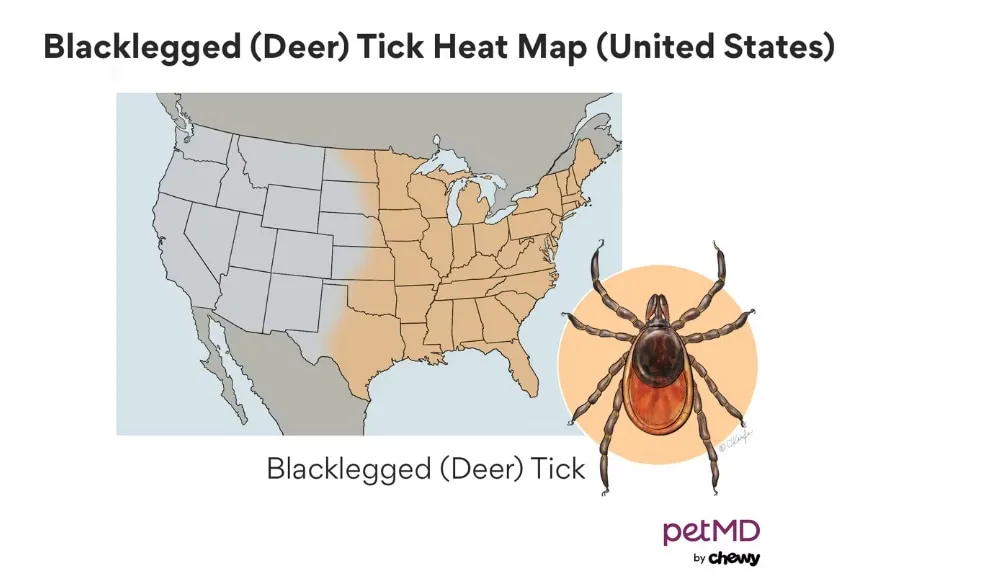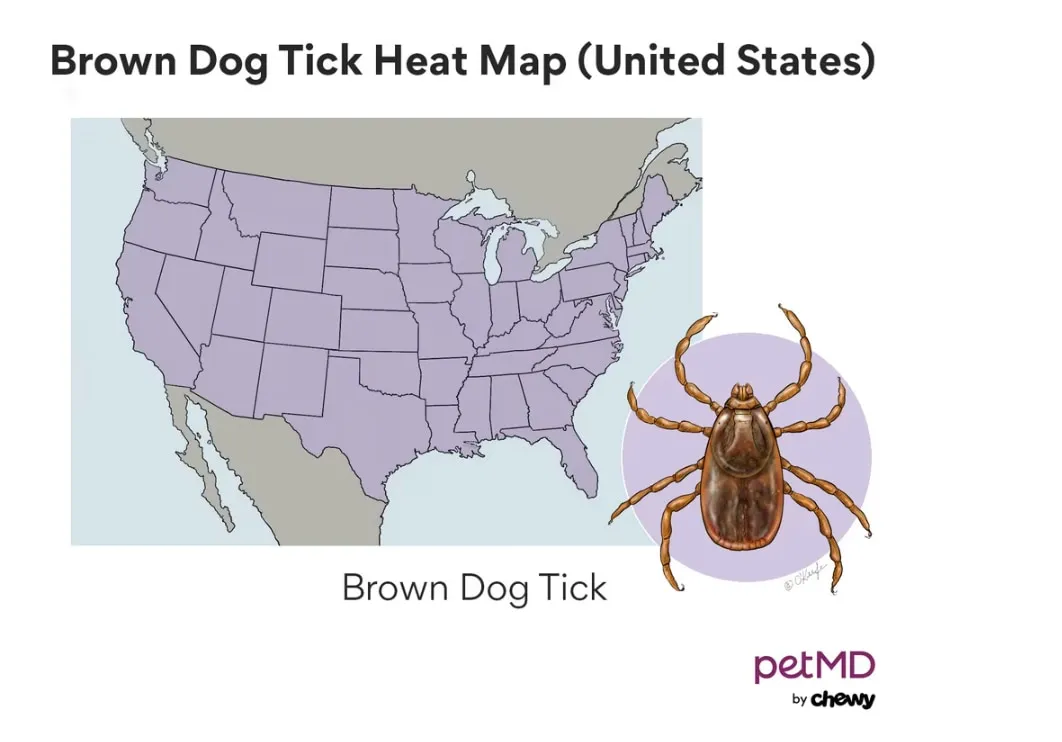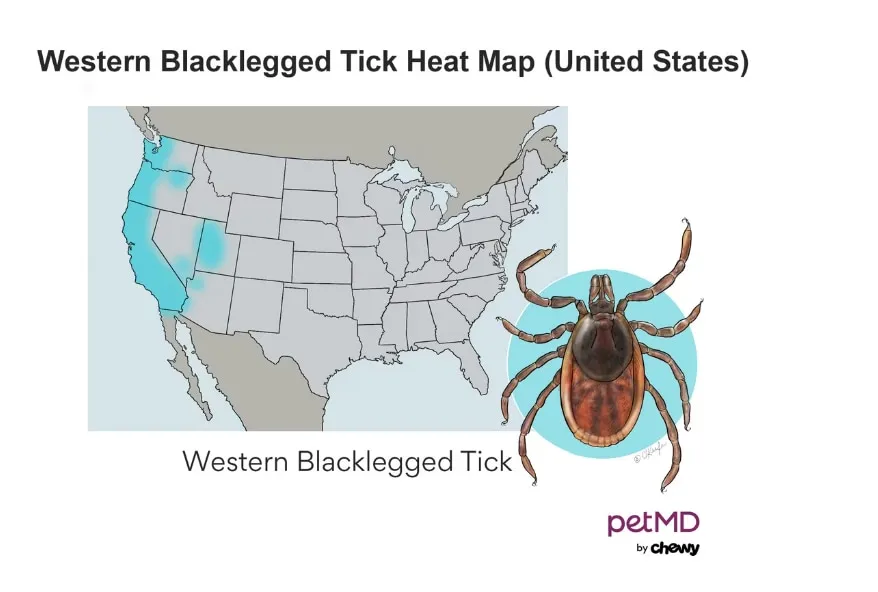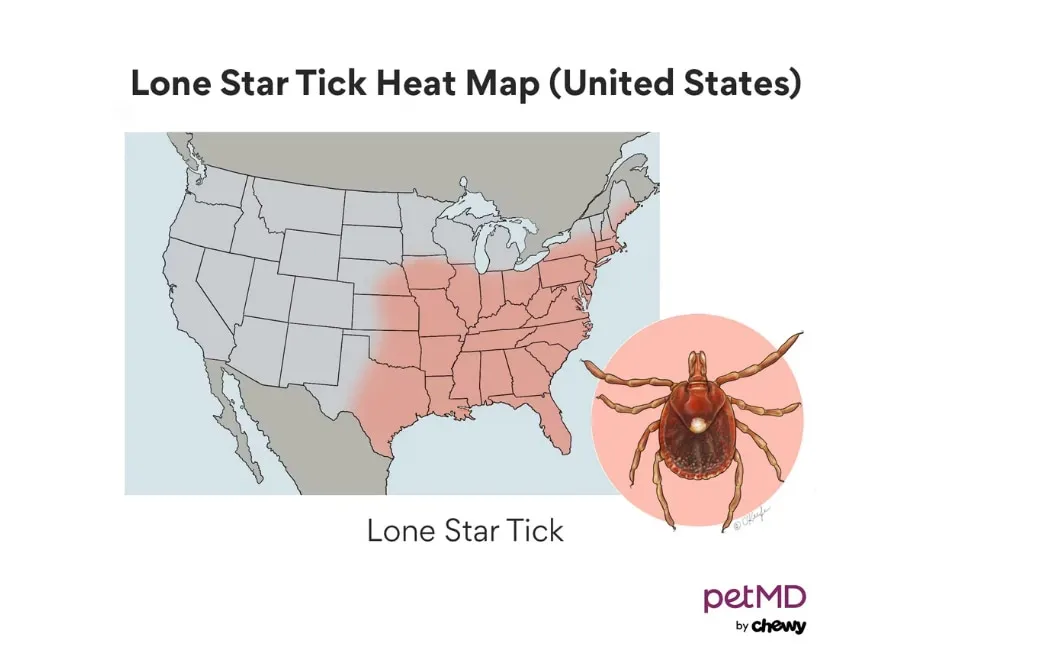Ensuring your dog’s health and happiness includes proactive preventative care, and one of the most effective strategies against common health issues is consistent use of monthly flea and tick preventatives. Among the many options available, Chewable Flea And Tick Medicine For Dogs has become a popular choice for its ease of administration and effectiveness.
This guide will delve into why flea and tick prevention is crucial, when it’s needed, how to select the right product for your canine companion, and explore popular chewable options. Understanding these vital aspects will empower you to provide the best defense against these pervasive parasites.
Why Is Flea and Tick Prevention Important for Dogs?
Fleas and ticks are external parasites (ectoparasites) that live on the outside of their host. For these pests to survive and reproduce, they must bite their host and feed on their blood. These seemingly small bites can have significant and detrimental impacts on your dog’s health, ranging from mild irritation to life-threatening diseases.
The saliva from a flea bite can trigger severe allergic reactions in sensitive dogs, leading to intense itching, skin inflammation (dermatitis), and secondary infections. In severe infestations, especially in puppies or small dogs, excessive blood loss can even result in anemia. Beyond the immediate discomfort and skin issues, fleas can also transmit tapeworms to dogs if ingested. If your dog is constantly scratching, it might be a sign of flea allergy dermatitis, which may require specific best allergy medicine for dogs with itchy skin in addition to parasite control.
Tick bites pose even more serious threats. While some bites might only cause localized swelling or abscesses, ticks are notorious vectors for a wide array of dangerous diseases. These can include Lyme disease, Ehrlichiosis, Anaplasmosis, and Rocky Mountain Spotted Fever, among others. In extreme cases, tick paralysis can occur, and some tick-borne diseases can even prove fatal if left untreated. Moreover, certain tick-borne illnesses can be transmitted from dogs to humans, underscoring the critical importance of keeping your dog free of these parasites and preventing them from entering your home.
When Do Dogs Need Flea and Tick Prevention?
Fleas and ticks are remarkably resilient and can thrive in diverse geographical areas and climates. While their activity might peak in warmer months, they can survive indoors year-round, especially in heated homes. Because these parasites carry diseases that can harm both your dog and potentially spread to people, it is crucial to implement flea and tick prevention early in your dog’s life. Veterinarians typically recommend starting prevention when puppies are 8 weeks old and maintaining a consistent, year-round prevention schedule throughout your dog’s entire life. This continuous protection ensures there are no gaps in defense, safeguarding your pet against potential infestations and disease transmission regardless of the season.
Choosing a Flea and Tick Combination Medicine for Dogs
The market offers a broad range of products designed to protect your dog from parasites. These products work through various mechanisms, including pesticides that kill adult parasites, repellents that deter them, or growth inhibitors that disrupt their life cycle. While some products target only one type of parasite, such as fleas, combination flea and tick preventatives for dogs are often recommended. These comprehensive options contain multiple active ingredients to combat various types of pests simultaneously. Many combination preventatives also offer extended protection against other internal parasites like heartworms, roundworms, hookworms, and even external parasites such as skin and getting rid of ear mites in dogs.
For example, products like Credelio Quattro offer broad-spectrum parasite protection, covering fleas, ticks, heartworms, roundworms, hookworms, and tapeworms, making them a robust choice for comprehensive defense.
Before making a decision on any flea and tick medication, it is paramount to consult with your veterinarian. They can help you determine the most appropriate product based on your dog’s specific needs, health status, and local parasite risks. When reviewing product labels and discussing with your vet, ensure you clarify the following critical points:
- Species Specificity: Confirm the product is formulated for dogs, not cats, as some ingredients toxic to cats are safe for dogs.
- Weight Range: Verify that the product is suitable for your dog’s current weight to ensure proper dosing and effectiveness.
- Parasite Coverage: Ensure the chosen product protects against the specific parasites prevalent in your area and relevant to your dog’s lifestyle.
- Administration Guidelines: Understand whether the product should be given with food, how often it needs to be administered (e.g., monthly, quarterly), and how long it takes to become effective.
- Post-Application Care: Know how soon your pet can be bathed or swim after application of topical products, as water can affect their efficacy.
- Safety Concerns: Discuss any potential side effects or safety-related concerns, especially if your dog has pre-existing medical conditions.
- Adverse Reactions: Be informed about what steps to take in the unlikely event of an adverse reaction.
Here are some other crucial factors to consider when selecting a flea and tick preventative:
1. Application Method
Flea and tick preventatives are primarily available in two common forms:
- Oral: These are chewable tablets that your dog ingests, often flavored to resemble a treat, making them easy to administer.
- Topical: These are liquid solutions applied directly to your dog’s skin, typically between the shoulder blades or down the back.
Topical flea and tick preventatives can be an excellent choice for dogs that are picky eaters or have sensitive stomachs, as they bypass the digestive system. However, caution is advised if you have small children or other pets in the household, as they should not touch or lick the application site before it is completely dry. Topical treatments may also be less ideal for dogs who frequently swim or require regular baths, as water exposure can diminish the product’s effectiveness over time.
Oral treatments, especially chewable flea and tick medicine for dogs, offer a convenient and simple option for many pet parents. They are often palatable and can be given like a regular treat. When using oral treatments, it’s important to monitor your dog to ensure they consume the entire tablet and do not vomit it before the active ingredients can be absorbed into their system. This method eliminates concerns about residue on the fur and is not affected by bathing or swimming.
2. Geography
The prevalence and types of local parasite populations, including various species of fleas and ticks, can differ significantly based on your geographical location. The Companion Animal Parasite Council (CAPC) is an invaluable resource that provides detailed maps and data on parasite prevalence across different regions. Utilizing resources like CAPC can help you identify the specific parasites common in your area, enabling you to choose a flea and tick product that offers comprehensive protection against those particular threats. Being aware of your local risks ensures your dog receives targeted and effective prevention.
 Common dog tick on a blade of grass, waiting for a host
Common dog tick on a blade of grass, waiting for a host
3. Access to the Outdoors
Consider the specific environments where your dog spends time outdoors. Places like dog parks, hiking trails, dense wooded areas, public parks, tall grasses, bushes, and even your own backyard can all harbor fleas and ticks. If your dog frequently explores wooded trails, open fields, or areas where other animals and dogs roam, their risk of exposure to parasites significantly increases.
It’s important to remember that even if your dog primarily stays indoors, fleas can still find their way into your home. They can enter through window screens, hitch a ride on other pets that go outside, or even be carried in on your clothing or shoes. For these reasons, veterinarians consistently recommend year-round flea and tick prevention for all dogs, regardless of the amount of time they spend outdoors. Consistent protection is the best defense against unforeseen exposures.
 Close-up of a lone star tick, identifiable by its distinct white spot
Close-up of a lone star tick, identifiable by its distinct white spot
4. MDR-1 Gene
Certain dog breeds, such as Collies, Australian Shepherds, and Shetland Sheepdogs, may carry a specific genetic mutation known as the MDR-1 gene. This mutation affects a dog’s ability to metabolize and excrete certain medications, making them more sensitive to particular drugs. For dogs with the MDR-1 mutation, some medications can accumulate in their system, potentially leading to adverse reactions.
Many veterinarians recommend testing dogs from affected breeds for the MDR-1 gene to ensure medication safety. However, it’s worth noting that many manufacturers of modern parasite preventatives have rigorously tested their products on dogs with the MDR-1 mutation and have found them to be safe with no adverse effects. Always discuss your dog’s breed and genetic predispositions with your veterinarian when choosing a preventative.
 Engorged tick after feeding, showing the dangers of unchecked parasites
Engorged tick after feeding, showing the dangers of unchecked parasites
5. Lifestyle
While no specific breed is inherently more susceptible to acquiring fleas or ticks, a dog’s lifestyle and personality characteristics can influence their risk of exposure. For instance, working dogs, herding dogs, or hunting dogs often spend a significant portion of their day outdoors in fields, forests, or other environments prone to parasites. In contrast, companion dogs who are content to stay at home and only venture outside for short walks may have a lower, but not negligible, risk of exposure. The more time a dog spends in natural, outdoor settings, particularly in areas with dense vegetation, the higher their potential for encountering fleas and ticks. Tailoring prevention to align with your dog’s typical activities ensures they receive adequate protection.
 Various types of ticks found in different regions, highlighting geographic risks
Various types of ticks found in different regions, highlighting geographic risks
6. Life Stage
A dog’s age and size are crucial considerations when selecting a flea and tick preventative. If you have a young puppy or a very small dog breed, it is essential to consult your veterinarian to find an appropriate product based on their weight and age. Most flea and tick preventatives have a minimum age requirement, typically 8 weeks, but always refer to the specific package insert for confirmation.
Some products are specially formulated for younger animals, allowing for earlier use. For example, certain topical solutions are designed for kittens and puppies and can be safely administered as early as 6 weeks of age. Ensuring the product matches your dog’s life stage is vital for both efficacy and safety.
7. Medical Conditions
Certain medical conditions can influence the choice of flea and tick preventative. A class of preventatives known as isoxazolines, which includes many popular chewable flea and tick medicine for dogs, should be used with extreme caution in dogs with a documented history of seizures or neurological disease. These medications have been known to potentially lower the seizure threshold in susceptible individuals, possibly leading to breakthrough seizures.
In general, no preventative medication should be administered without a thorough discussion with your veterinarian, particularly if:
- Your dog has previously experienced an allergic reaction to any medication.
- Your dog is currently unwell, debilitated, or underweight.
- Your dog is pregnant, nursing a litter, or is intended for future breeding.
Your veterinarian can assess these factors and recommend the safest and most effective option for your dog’s unique health profile.
Over-the-Counter vs. Prescription Flea and Tick Medicine
When exploring flea and tick prevention options, you’ll encounter products available both over-the-counter (OTC) and by prescription. Understanding the differences between these categories is important for making an informed decision.
Over-the-Counter Flea and Tick Products
Over-the-counter (OTC) flea and tick preventatives do not require a veterinarian’s prescription or a prior professional relationship. These products are readily available for purchase online and at most retail pet stores. They often include topical treatments, shampoos, collars, and some oral options. While convenient, the efficacy and safety profiles of OTC products can vary. If you choose to use an OTC flea and tick preventative, it is always advisable to consult with your veterinarian beforehand to ensure it is a safe and appropriate option for your pet. Our article on over the counter flea medicine for dogs provides more insights. Additionally, if you’re looking for alternatives that don’t require a vet visit, you might explore best non prescription flea treatment for dogs.
Prescription Flea and Tick Products
Prescription flea and tick preventatives, which include many effective chewable flea and tick medicine for dogs, require a veterinary prescription. These products are typically obtained through your vet’s office or an authorized online pharmacy after a consultation. While prescription options may have a slightly higher cost than many OTC alternatives, they are generally recommended by most veterinarians. This preference stems from their rigorous testing, proven efficacy, and often broader spectrum of protection, making them typically more effective and safer for your dog. Your vet can provide tailored advice and ensure the product is suitable for your dog’s health status.
Popular Dog Flea and Tick Prevention Products
The market offers numerous effective flea and tick prevention products. Here’s a look at some popular options, focusing on the highly sought-after chewable flea and tick medicine for dogs where applicable, along with other common types:
Advantage
- Advantage II: This is a topical monthly product containing imidacloprid and pyriproxyfen. It acts rapidly, killing all forms of fleas (eggs, larvae, adults) and chewing lice within hours. However, it does not offer tick prevention. It’s suitable for dogs and puppies over 7 weeks old and weighing more than 3 pounds.
- Advantage Multi: Also a topical monthly product, Advantage Multi combines imidacloprid and moxidectin. This formulation treats fleas, sarcoptic mange, and intestinal parasites like hookworms, roundworms, and whipworms, in addition to preventing heartworm disease. It’s fast-acting against fleas (within hours) and other parasites (within 24 hours). This product does not provide tick prevention. It’s for dogs and puppies over 7 weeks old and weighing more than 3 pounds.
Bravecto
Bravecto is available as a chewable tablet and a topical solution, featuring fluralaner, an active ingredient from the isoxazoline class. As a popular chewable flea and tick medicine for dogs, it’s fast-acting, starting to kill fleas within two hours and ticks within 12 hours. Bravecto also demonstrates effectiveness against demodectic, sarcoptic mange, and ear mites. Due to its isoxazoline component, all Bravecto products should be used cautiously in dogs with a history of seizures, epilepsy, or other neurological disorders.
Comfortis
Comfortis is a chewable tablet that contains spinosad. This product specifically targets and treats fleas, acting very quickly to kill fleas within 30 minutes of administration. Comfortis does not provide protection against ticks. It is recommended for dogs and puppies 14 weeks or older and weighing over 5 pounds, typically administered monthly.
Credelio
Credelio is a monthly chewable flea and tick medicine for dogs, containing lotilaner, another active ingredient in the isoxazoline drug class. It effectively treats both fleas and ticks, beginning to kill fleas within four hours of administration. This product is suitable for dogs and puppies over 8 weeks old and weighing more than 4.4 pounds. Similar to other isoxazoline-based medications, Credelio should be used with caution in dogs with a history of seizures, epilepsy, or neurological disorders.
Credelio Quattro
An advanced chewable flea and tick medicine for dogs, Credelio Quattro builds upon Credelio’s foundation. It contains lotilaner for flea and tick treatment, along with three additional active ingredients: moxidectin (protects against heartworms, hookworms, and roundworms), praziquantel (targets two species of tapeworms), and pyrantel (further protection against hookworms and roundworms). Administered monthly, Credelio Quattro offers comprehensive protection for dogs and puppies 8 weeks of age and older who weigh at least 3.3 pounds.
Frontline
- Frontline Gold: This topical monthly product combines fipronil, (s)-methoprene, and pyriproxyfen. It rapidly kills fleas, ticks, and chewing lice within hours. Frontline Gold is for dogs and puppies over 8 weeks old and weighing more than 5 pounds.
- Frontline Plus: A topical monthly solution containing fipronil and (s)-methoprene. It kills fleas, ticks, and chewing lice and is fast-acting, though it may take slightly longer than Frontline Gold. It’s for dogs and puppies over 8 weeks old and weighing more than 5 pounds.
- Frontline Shield: This topical monthly product includes fipronil, permethrin, and pyriproxyfen. It kills all fleas, ticks, chewing lice, and stable flies, while also repelling mosquitoes, stable flies, and ticks. Frontline Shield is fast-acting, starting to kill fleas in five minutes and ticks within one hour. It’s for dogs and puppies over 9 weeks old and weighing more than 5 pounds. Important: This product is highly toxic to cats; extreme caution or avoidance is necessary in households with cats.
K9 Advantix
K9 Advantix II is a topical monthly product with imidacloprid, permethrin, and pyriproxyfen. This combination effectively repels and kills fleas, ticks, mosquitoes, and chewing lice, and also repels biting flies. It’s fast-acting, starting to kill parasites within hours. K9 Advantix II is suitable for dogs and puppies over 7 weeks old and weighing more than 4 pounds. Crucially, this product is highly toxic to cats, so it must be used with extreme caution or avoided in multi-pet households.
Nexgard
Nexgard is a popular monthly chewable flea and tick medicine for dogs. It contains afoxolaner, an isoxazoline-class drug, making it effective against fleas and various ticks, including deer, American dog, brown dog, and Lone Star ticks. It is also used off-label for treating sarcoptic and demodectic mange. Nexgard begins killing fleas within four hours and ticks within 48 hours. It’s for dogs and puppies over 8 weeks old and weighing more than 4 pounds. As with other isoxazolines, use with caution in dogs with a history of seizures, epilepsy, or neurological disorders.
Onguard Plus
Onguard Plus is a topical monthly product that combines fipronil and (s)-methoprene. This formulation kills all fleas, ticks, sarcoptic mange mites, and chewing lice. It is intended for dogs and puppies over 8 weeks old and weighing more than 5 pounds.
Seresto
Seresto is a collar-based solution containing imidacloprid and flumethrin. This combination kills and repels fleas and ticks for up to eight months. Fleas are killed within 24 hours of application, and ticks within 48 hours. If a dog bathes or swims frequently (more than once per month), the collar’s efficacy may decrease, potentially requiring replacement as often as every five months. It is suitable for dogs and puppies over 7 weeks of age.
Simparica Trio
Simparica Trio is a comprehensive monthly chewable flea and tick medicine for dogs. It contains sarolaner (an isoxazoline-class drug), moxidectin, and pyrantel. This powerful combination treats fleas, ticks, roundworms, and hookworms, while also preventing heartworm disease. It is also used off-label to treat demodectic mange, sarcoptic mange, and ear mites. Simparica Trio begins killing fleas and ticks within 12 hours. It’s for dogs and puppies over 8 weeks old and weighing more than 2.8 pounds. As an isoxazoline, Simparica Trio should be used with caution in dogs with a history of seizures, epilepsy, or neurological disorders.
Trifexis
Trifexis is a chewable tablet that contains spinosad and milbemycin oxime. It is effective against fleas, hookworms, roundworms, and whipworms, and also prevents heartworm disease. Trifexis is a fast-acting drug, beginning to kill fleas within 30 minutes of administration. However, this product does not offer protection from ticks. It is suitable for dogs and puppies 8 weeks or older and weighing over 5 pounds.
Vectra 3D
Vectra 3D is a topical monthly product containing dinotefuran, permethrin, and pyriproxyfen. This combination repels and kills fleas, ticks, mosquitoes, chewing lice, sand flies, biting flies, and some mites. Vectra 3D begins killing parasites within hours. It is for dogs and puppies over 8 weeks old and weighing more than 5 pounds, typically applied monthly. Critical Warning: This product is highly toxic to cats; extreme caution or avoidance is essential in households with cats.
Conclusion
Effective flea and tick prevention is a cornerstone of responsible dog ownership, safeguarding your beloved pet from a myriad of health threats and preventing potential disease transmission to humans. By understanding the various types of preventatives, especially the convenience and efficacy of chewable flea and tick medicine for dogs, you can make an informed choice that best suits your dog’s needs and lifestyle.
Remember that a consistent, year-round prevention schedule, starting from puppyhood, is key to maintaining optimal protection. Always consult your veterinarian to discuss the best options for your dog, taking into account their age, weight, health conditions, and geographical risks. With the right preventative measures in place, you can ensure your dog lives a healthier, happier, and parasite-free life. Explore more articles on Dog Care Story to further enhance your pet care knowledge!
References
- PetMD. “Best Flea & Tick Medications for Dogs.” PetMD.com.
- PetMD. “Dog Parent Guide to Flea and Tick Season.” PetMD.com.
- PetMD. “Flea Bite Hypersensitivity (Allergy) in Dogs.” PetMD.com.
- PetMD. “Anemia in Dogs.” PetMD.com.
- PetMD. “Why Is My Dog Itching So Much?” PetMD.com.
- PetMD. “6 Tick Diseases in Dogs.” PetMD.com.
- PetMD. “Heartworm Disease in Dogs.” PetMD.com.
- Chewy. “Credelio Quattro Chewable Tablets.” Chewy.com.
- PetMD. “How to Choose a Flea and Tick Pill for Dogs.” PetMD.com.
- PetMD. “Dogs That Love to Swim.” PetMD.com.
- PetMD. “8 Types of Ticks on Dogs.” PetMD.com.
- Companion Animal Parasite Council (CAPC). CAPCvet.org.
- PetMD. “MDR1 Gene in Dogs.” PetMD.com.
- PetMD. “Collie (Breed).” PetMD.com.
- PetMD. “Australian Shepherd (Breed).” PetMD.com.
- PetMD. “Shetland Sheepdog (Breed).” PetMD.com.
- PetMD. “Best Hunting Dogs.” PetMD.com.
- PetMD. “Small Dog Breeds.” PetMD.com.
- Chewy. “Revolution Topical Solution for Kittens and Puppies.” Chewy.com.
- PetMD. “Seizures in Dogs.” PetMD.com.
- PetMD. “Dog Pregnancy, Birth, and Puppy Care: A Complete Guide.” PetMD.com.
- Chewy. “Advantage II for Dogs.” Chewy.com.
- PetMD. “Understanding the Flea Life Cycle.” PetMD.com.
- Chewy. “Advantage Multi for Dogs.” Chewy.com.
- PetMD. “Sarcoptic Mange in Dogs.” PetMD.com.
- PetMD. “Hookworm Infection (Ancylostomiasis) in Dogs.” PetMD.com.
- PetMD. “Roundworm Infection (Ascariasis) in Dogs.” PetMD.com.
- PetMD. “Whipworm Infection (Trichuriasis) in Dogs.” PetMD.com.
- Chewy. “Bravecto for Dogs.” Chewy.com.
- PetMD. “Epilepsy in Dogs.” PetMD.com.
- Chewy. “Comfortis for Dogs.” Chewy.com.
- Chewy. “Credelio for Dogs.” Chewy.com.
- PetMD. “Praziquantel.” PetMD.com.
- PetMD. “Pyrantel Pamoate.” PetMD.com.
- Chewy. “Frontline Gold for Dogs.” Chewy.com.
- Chewy. “Frontline Plus for Dogs.” Chewy.com.
- Chewy. “Frontline Shield for Dogs.” Chewy.com.
- Chewy. “K9 Advantix II for Dogs.” Chewy.com.
- PetMD. “Black Fly Bites in Dogs.” PetMD.com.
- Chewy. “Nexgard for Dogs.” Chewy.com.
- PetMD. “About the Wood Tick (American Dog Tick).” PetMD.com.
- PetMD. “Lone Star Tick.” PetMD.com.
- PetMD. “Demodicosis (Demodectic Mange) in Dogs.” PetMD.com.
- Chewy. “Onguard Plus for Dogs.” Chewy.com.
- PetMD. “Seresto (Flumethrin, Imidacloprid).” PetMD.com.
- Chewy. “Simparica Trio for Dogs.” Chewy.com.
- Chewy. “Trifexis for Dogs.” Chewy.com.
- Chewy. “Vectra 3D for Dogs.” Chewy.com.
